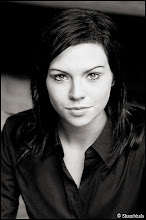Recording the Data
The approach we take to data collection involves systematically gathering information and recording it in such a way that it can be preserved and analyzed by a single researcher or a team of researchers. For qualitative data collection, forms for recording the information need to be developed. If interview data are collected, then an interview protocol is needed that not only lists the questions and provides space in which to record answers but also has a place for essential data about the time, day, and place of the interview. In many cases, the researcher audiotapes the qualitative interviews and later transcribes the interviews. Having an interview protocol helps keep the researcher organized, and it provides a record of information in the event that the recording devices do not work. An observational protocol also provides a useful way of organizing an observation. On this form, the researcher records a description of events and processes observed, as well as reflective notes about emerging codes, themes, and concerns that arise during the observation. Recording forms can also be developed for reviewing documents
and for recording image data, such as photographs.
The approach we take to data collection involves systematically gathering information and recording it in such a way that it can be preserved and analyzed by a single researcher or a team of researchers. For qualitative data collection, forms for recording the information need to be developed. If interview data are collected, then an interview protocol is needed that not only lists the questions and provides space in which to record answers but also has a place for essential data about the time, day, and place of the interview. In many cases, the researcher audiotapes the qualitative interviews and later transcribes the interviews. Having an interview protocol helps keep the researcher organized, and it provides a record of information in the event that the recording devices do not work. An observational protocol also provides a useful way of organizing an observation. On this form, the researcher records a description of events and processes observed, as well as reflective notes about emerging codes, themes, and concerns that arise during the observation. Recording forms can also be developed for reviewing documents
and for recording image data, such as photographs.
In quantitative research, the investigator selects an instrument to use or develops an instrument. This instrument may be an attitudinal scale, with scores of past use showing high reliability and validity. It might be a reliable and valid checklist based on past scores. For documents with numeric data, the researcher often composes a form that summarizes the data. In choosing an instrument or a checklist, the researcher is concerned about the validity and reliability of past scores, whether the questions fit the research questions and hypotheses in the study, and whether adequate scales are used to report the information.


No comments:
Post a Comment